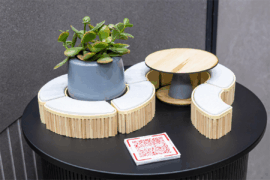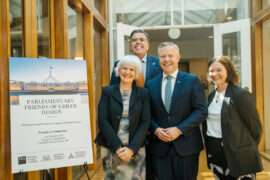Presented by BLUECHIP
April 21st, 2021
Several fires over the past decade, including one at London’s Grenfell Tower in 2017 that resulted in significant loss of life, have shone a light on the use of combustible cladding in tower buildings around the world including here in Australia.
Despite regulatory change aimed at clarifying the issue of fire safety, there is still a widespread lack of understanding based on comparing ‘generic’ product types regardless of brand. In the case of aluminium cladding, for example, while some products are made with a combustible core and should never be used, others comply with fire safety regulations and are completely safe.
What are these compliant aluminium cladding products and how do they satisfy the fire safety requirements? Moreover, how do they compare to each other in terms of other important considerations like waterproofing, durability, sustainability, and thermal transfer?

Ben Wallis. Sales Director (BLUECHIP)
Ben founded BLUECHIP in 2003 with his five brothers, and it has grown every year since to become one of Australia’s leading suppliers of architectural building envelopes. BLUECHIP’s product range covers the complete system from the structure out including all types of cladding materials, sub-framing, insulation, waterproofing and fixings.
With many years combined experience, BLUECHIP has now supplied more than 3,000,000m2 of materials to Australian projects since 2003 and Ben plays an important role as the companies Technical Director. In Ben’s words, “their commitment to innovation and ongoing investment in R&D ensures BLUECHIP will continue to lead the market with BCA/NCC compliant façade solutions in the years ahead and their vision to be trusted advisors to the industry and not just another supplier, means they will always put the long-term interests of the building owner first”.
INDESIGN is on instagram
Follow @indesignlive
A searchable and comprehensive guide for specifying leading products and their suppliers
Keep up to date with the latest and greatest from our industry BFF's!

From the spark of an idea on the page to the launch of new pieces in a showroom is a journey every aspiring industrial and furnishing designer imagines making.

CDK Stone’s Natasha Stengos takes us through its Alexandria Selection Centre, where stone choice becomes a sensory experience – from curated spaces, crafted details and a colour-organised selection floor.

The undeniable thread connecting Herman Miller and Knoll’s design legacies across the decades now finds its profound physical embodiment at MillerKnoll’s new Design Yard Archives.

For Aidan Mawhinney, the secret ingredient to Living Edge’s success “comes down to people, product and place.” As the brand celebrates a significant 25-year milestone, it’s that commitment to authentic, sustainable design – and the people behind it all – that continues to anchor its legacy.

The final day of CPD Live’s 2025 season delivers three must-attend sessions exploring circular design for furniture and fitouts, and the science behind safe, high-quality drinking water. Starting from 9 AM AEDT, 16th October – it’s your last opportunity this year to join our Live CPD sessions and finish 2025 inspired.

CPD Live’s final live-presented season for 2025 continues with a powerful Day 2 lineup, delving into façade weatherproofing, apartment design trends, smart bathrooms, and digital compliance. Starting from 9 AM AEDT, these free CPD-accredited sessions will help you finish the year with fresh insight and full compliance confidence.
The internet never sleeps! Here's the stuff you might have missed

Professor of architecture, academic, television presenter and much else besides, Anthony Burke joins Timothy Alouani-Roby in Sydney for a live audience discussion about housing and his globetrotting story in architecture.

The Parliamentary Friends reconvened at Parliament House, uniting political and professional leaders to champion architecture and design.